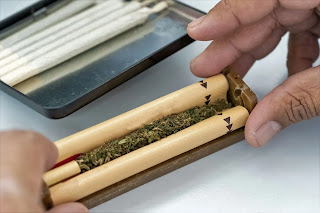Hemp and Weed: Clearing the Smoke on Cannabis Confusion
Cannabis. It's a plant that's been in the news, debated in legislatures, and discussed around kitchen tables for decades. But within the cannabis family, there's a lot of confusion, particularly when it comes to hemp and "weed" (marijuana). While they're related, they're far from the same thing. Let's break down the key differences and clear the smoke.
The Family Ties: Both Cannabis, But Different Varieties
Both hemp and marijuana belong to the Cannabis sativa L. species. However, they're distinct varieties, bred and cultivated for different purposes. Think of it like different breeds of dogs – same species, vastly different characteristics.
The Key Distinction: THC vs. CBD
The primary difference lies in their chemical composition, specifically the levels of two key cannabinoids:
 |
| Ooze Metal Rolling Tray – Limited Edition Time Warp |
- THC (tetrahydrocannabinol): This is the psychoactive compound that produces the "high" associated with marijuana. Marijuana is bred for high THC content, typically ranging from 0.3% to 30% or more.
- CBD (cannabidiol): This is a non-psychoactive compound known for its potential therapeutic benefits. Hemp is bred for high CBD content and very low THC content, legally defined as 0.3% or less in the United States.
Hemp: The Versatile Workhorse
Hemp is a powerhouse of versatility, valued for its:
- Fiber: Used to make textiles, rope, paper, building materials, and bioplastics.
- Seeds: A nutritional powerhouse, rich in protein, omega fatty acids, and fiber.
- CBD: Extracted for use in various wellness products, including oils, tinctures, topicals, and edibles.
- Other Cannabinoids: Hemp contain many other beneficial cannabinoids besides CBD, such as CBG, and CBN.
Because of the low THC content, hemp cannot get you "high." It's primarily used for industrial and wellness purposes.
Marijuana: The Psychoactive Plant
Top City Beaker Bong
Marijuana, on the other hand, is primarily cultivated for its high THC content, which produces psychoactive effects. It's used for:
- Recreational purposes: To induce a sense of euphoria, relaxation, or altered perception.
- Medical purposes: To alleviate symptoms of various conditions, such as chronic pain, nausea, and anxiety, in regions where it is legal.
Legal Landscape: A Patchwork of Regulations
The legal status of hemp and marijuana varies significantly:
- Hemp: In the United States, the 2018 Farm Bill legalized hemp cultivation and the production of hemp-derived products with less than 0.3% THC.
- Marijuana: Remains federally illegal in the U.S., although many states have legalized it for medical or recreational use. This creates a complex patchwork of regulations.


.webp)

.webp)





.jpg)
.jpg)
Comments
Post a Comment